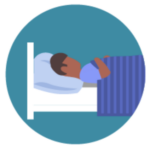Coronavirus disease (COVID-19) is a growing threat to nonprofits who rely on public events and to drive fundraising. But your nonprofit doesn’t have to be a victim! Here are some thoughts on how to fight coronavirus with giving.
The reality of the dangers posed by the Coronavirus are unavoidable. And while there are steps to take to try and protect ourselves and others, nonprofits also need to take a step back and think about how to best serve their donors during this distinct time in our history.
One of the biggest problems, of course, is that we don’t have much information about this new threat.
We certainly know it’s highly infectious and likes to travel.
We also know, as with any influenza virus, the risk of infection and harm is much higher among vulnerable populations.
Unfortunately, many donors fit in the category of those most vulnerable to the disease as they tend to be older.
This means lots of nonprofits are canceling their public events to protect the people they care about.
Even religious institutions like churches, synagogues, and mosques are canceling services and prayers to keep their people safe.
But safety comes at a price.
For nonprofits who rely on banquets, services, galas, clubs, and walks to raise donors for their causes—canceling gatherings means losing precious income.
So how can you keep your donors safe while minimizing the impact?
1. Show your care.
Showing that you care about your donors during this pandemic exemplifies what responsive fundraising means.
Responsive fundraising means putting your donor at the center of fundraising.
Normally, this means that you need to craft your communications according to your donor’s preferences, rather than your own.
But during times of crisis like COVID-19, it means literally putting their welfare above your own.
You can show your donors how much you care by posting public service announcements telling them…
- How seriously you’re taking the threat,
- What steps you’re taking to mitigate the risk of your donors getting infected, and
- How canceling or postponing your public events helps protect your donors.
The main idea here is something like this:
| Don’t Say… | Say… |
| “Due to the coronavirus pandemic, we’re canceling our annual gala.” | “We care deeply for you and your health, which is why we’ve chosen to postpone our annual gala.” |
Make sure you’re showing them how much you care.
Above all, avoid any language in your communications that would make them feel that somehow you’re unhappy to do whatever it takes to keep your donors safe.
2. Be helpful.
After demonstrating you’re doing everything in your power to protect your donors, I recommend giving them a list of things they can do to stay safe.
Why not share the following helpful information from the CDC?
 Clean your hands often
Clean your hands often
- Wash your hands often with soap and water for at least 20 seconds especially after you have been in a public place, or after blowing your nose, coughing, or sneezing.
- If soap and water are not readily available, use a hand sanitizer that contains at least 60% alcohol. Cover all surfaces of your hands and rub them together until they feel dry.
- Avoid touching your eyes, nose, and mouth with unwashed hands.
 Avoid close contact
Avoid close contact
- Avoid close contact with people who are sick
- Put distance between yourself and other people if COVID-19 is spreading in your community. This is especially important for people who are at higher risk of getting very sick.
 Stay home if you’re sick
Stay home if you’re sick
- Stay home if you are sick, except to get medical care. Learn what to do if you are sick.
 Cover coughs and sneezes
Cover coughs and sneezes
- Cover your mouth and nose with a tissue when you cough or sneeze or use the inside of your elbow.
- Throw used tissues in the trash.
- Immediately wash your hands with soap and water for at least 20 seconds. If soap and water are not readily available, clean your hands with a hand sanitizer that contains at least 60% alcohol.
 Wear a facemask if you are sick
Wear a facemask if you are sick
- If you are sick: You should wear a facemask when you are around other people (e.g., sharing a room or vehicle) and before you enter a healthcare provider’s office. If you are not able to wear a facemask (for example, because it causes trouble breathing), then you should do your best to cover your coughs and sneezes, and people who are caring for you should wear a facemask if they enter your room. Learn what to do if you are sick.
- If you are NOT sick: You do not need to wear a facemask unless you are caring for someone who is sick (and they are not able to wear a facemask). Facemasks may be in short supply and they should be saved for caregivers.
 Clean and disinfect
Clean and disinfect
- Clean AND disinfect frequently touched surfaces daily. This includes tables, doorknobs, light switches, countertops, handles, desks, phones, keyboards, toilets, faucets, and sinks.
- If surfaces are dirty, clean them: Use detergent or soap and water prior to disinfection.
If you’re thinking that every other nonprofit is doing this—then that’s even more of a reason to do it!
You don’t want to be the only organization in your donors’ life that isn’t being helpful.
Silence means, I don’t care…
And that’s the last thing you want to say to your donors.
3. Remind them of the cause.
After you’ve demonstrated care and lent a helping hand, it’s time to remind your donor that they are still at the heart of the mission you serve.
Orphan children still need to eat.
People still need to hear your message.
The polar ice caps are still melting.
Whatever your cause is, the need and urgency is still there.
Yet it’s hard for donors to see why they should give when they’ve got their own safety to worry about.
This is where you must remind them how much their donations are needed to keep the cause alive.
4. Invite them to give safely–online!
When you make the case that your cause is worth supporting, you must also give them a way to give safely through your online giving page.
Try setting up a landing page just for giving safely during the coronavirus outbreak. Allow donors to demonstrate that they’re not giving up on the things they care about the most.
The truth is your donors still care. So make sure they know you care about them too.


